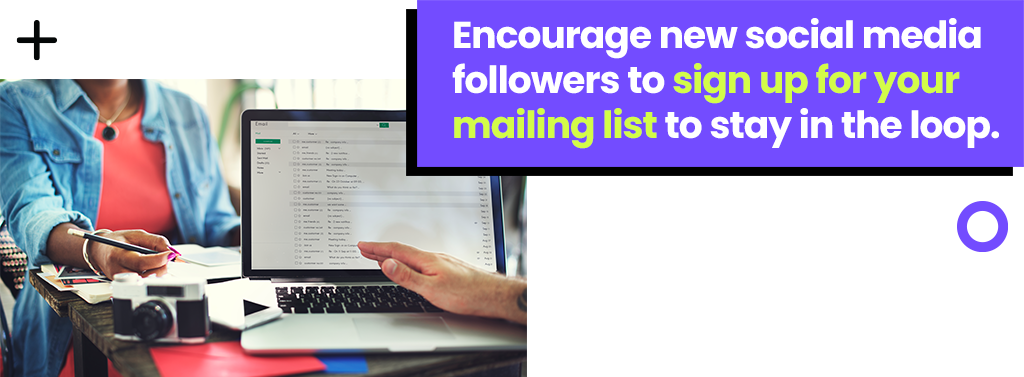Buckle up because you’re about to read some important advice! In short, you need to resist the urge to take your foot off the gas when the dust settles after GivingTuesday.
We know. The last few weeks have been a whirlwind. And we’re not out of the weeds yet.
After all, your year-end push is just around the corner.
With only 29 days between GivingTuesday and the start of 2025, you might be tempted to take time to breathe, collect yourself, and prepare for the big end-of-year push.
But that could be a huge mistake! Yes, you deserve a rest after all your hard work this year, but not yet. First, you need to implement a thorough and practical plan to connect with your audience after GivingTuesday.
Of course, we’ll start by thanking those who donated on GivingTuesday. But too many nonprofits send a thank you email and think they’ve done their job.
Effectively following up requires much more.

Different donors, different messages.
First things first. You already know you need to promptly thank the donors who helped make GivingTuesday a success for your organization.
But everyone shouldn’t receive the same message.
GivingTuesday brings in a lot of new donors. You will need to do more than say “thank you” if this is the first time you’re contacting someone directly. And you will need to send something different to donors who are more familiar with your organization.
So, if you have their email, send first-time donors a digital version of your new donor welcome package and thank them for joining your movement.
You can also ask them questions like “How did you hear about our organization?” and “What inspired you to give on GivingTuesday?” to understand your new supporters better.
And if you’re feeling bold, you can ask if they would prefer to receive an email or printed version of your year-end appeal.
Then, remind your segment of existing donors about their continued impact on your mission when thanking them after GivingTuesday. Let them know you value their continued support and thank them for making a difference.
But don’t forget your usual donors who did not donate on GivingTuesday. Reach out to this segment and let them know you missed their contribution. Then, remind them it’s not too late to make a difference this year. Ask them to watch for your year-end appeal (or add another donate button in the email).
LEARN MORE: How to segment your nonprofit’s audience.
Dollars and sense.
Reporting your success on GivingTuesday is a double-edged sword. Your donors certainly care about your success, but you need to tell them in a way that gets them excited about your work. A number alone cannot do that.
For example, rather than, “We raised $5,000 this GivingTuesday,” you can say, “We raised enough to buy 200 toys so underserved children have a present to open this holiday season.”
And don’t overlook other numbers that might interest donors more than a dollar amount.
For example, let your audience know how many people contributed on GivingTuesday. This could be especially powerful if you had many more donors this year than last.
Reporting numbers about how many donors gave, not what they donated, helps everyone feel like a part of your community. It shows them others think your cause is worth supporting, too.
LEARN MORE: Donors need to know the impact of every donation.

Stand out on social media.
#GivingTuesday is a social media phenomenon, and you probably had several social posts leading up to and on GivingTuesday. But your social channels shouldn’t go quiet afterward.
You probably picked up new followers if you ran an effective GivingTuesday social media campaign. Your posts got these people so excited that they donated and wanted to keep up with your nonprofit’s activities online.
So, don’t disappoint them! Your social media strategy needs to continue after GivingTuesday if you want to build relationships with your new followers.
Remember, you won’t get much information about someone from a page like. And if they gave through Facebook or another third party, you might not have collected any information about them at all.
So, make sure you frequently post on your social channels after GivingTuesday. Include things like infographics that explain how donations further your goals. Post pictures of volunteer outings or those who benefit from your work. And encourage followers to sign up for your mailing list.
LEARN MORE: Taking the next step with your social media appeal.

Focus on the year-end.
Your year-end appeal is a great way to tie GivingTuesday into your over-arching fundraising strategy. This approach is especially powerful if you take our advice above about segmenting audiences when following up after GivingTuesday.
Start by separating your donor base into two groups: those who gave on GivingTuesday and those who did not.
Then promote your year-end appeal when you follow up. Thank donors who gave on GivingTuesday and let them know they can further their impact with another gift at the year’s end.
Then, prep those who didn’t contribute on GivingTuesday for your upcoming appeal. Show them what your organization is accomplishing because of the support you’ve received so far.
You can take a similar approach to your monthly giving program. For example, consider creating a segment for donors who gave less than $20 on GivingTuesday.
Ask them if they want to make that gift monthly when you follow up.
It’s crucial to outline the benefits of monthly giving for these donors. Explain how monthly donations sustain the impact of your initiatives year-round. And let them know why other donors prefer to give small monthly donations rather than one or two large contributions a year.
LEARN MORE: Helping GivingTuesday donors make a bigger impact.
It’s not just a day of giving.
We won’t lie to you. There is going to be a lot of noise on GivingTuesday.
And it’s impossible to stand out from the crowd if you don’t have a strategic approach to your outreach.
After all, donors will probably get an email from every organization they’ve ever engaged with on December 3.
However, most of those organizations are focused on raising the most they can in a single day. Nonprofits that see GivingTuesday as a one-and-done event generally don’t have a great plan to follow up.
Sure, they will reach out to say thank you. But there probably won’t be much more to it. They probably won’t reach out to current donors who did not donate on GivingTuesday until they send that year-end appeal.
This is where your organization can really stand out.
Donors will have a very brief, quiet period between GivingTuesday and the end-of-year push. You can use this quiet time to set your organization apart while laying the foundation for a strong relationship with your new audiences.
Click here, and let’s book a time to chat about your GivingTuesday follow-up!









